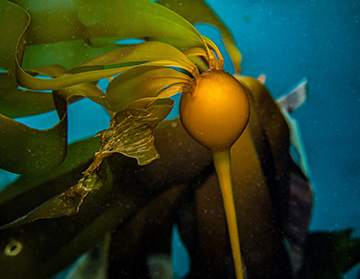
Chapter 6: Habitat Suitability

Assessing critical habitat features determines whether habitats can support sea otter populations in the future. A habitat suitability analysis represents an important step in (1) selecting prospective sites for a future reintroduction, (2) assessing where sea otters are most likely to concentrate in the future, and (3) identifying where the otters might potentially conflict with human activities.
Based on the abundance and distribution of existing sea otter populations in coastal habitats around the North Pacific, it seems likely that all of coastal Oregon (including estuaries) represents potentially suitable sea otter habitat. However, there is considerable variation in habitat features throughout the state—benthic substrate (and associated invertebrate prey communities), kelp canopy cover along the outer coast, eelgrass beds in estuaries—and certain areas may provide higher-quality habitat for sea otters.

Chapter 6
- Critical Resources for Sea Otters
- Habitat Suitability in OR: Overview
- Substrate
- Kelp Distribution
- Sea Otter Prey
- Estuaries
- Water Quality Considerations
- Conclusions
Oregon Habitats Likely to Be the Most Suitable
- Outer coast habitats:
- Port Orford — Blanco Reef, Orford Reef, and Redfish Rocks
- Cape Arago — Simpson Reef
- Depoe Bay/Yaquina Head
- Estuarine habitats:
- Tillamook Bay
- Yaquina Bay
- Coos Bay
Note: The latter two have the advantage of proximity to outer coast reefs and kelp beds that could provide varying habitats for establishing sea otter populations.

Learn More
- Chapter 1 – Intro
- Chapter 2 – Prior History
- Chapter 3 – Population impacts
- Chapter 4 – Genetic considerations
- Chapter 5 – Ecosystem effects
- Chapter 6 – Habitat suitability
- Chapter 7 – Socioeconomics
- Chapter 8 – Admin/legal issues
- Chapter 9 – Logistics
- Chapter 10 – Health & welfare
- Chapter 11 – Stakeholder issues
- Chapter 12 – Conclusions
- Appendices: ORSO app, maps
Related: Reintroduction Economic Study
Key Quotes
“Sea otter occurrence in nearshore marine habitats depends on characteristics such as depth and slope, substrate composition, prey abundance and primary productivity, and coastal geography, as well as the otters’ behavior and social structure. All of these features contribute to the spatial variation in sea otter distribution and abundance (Tinker et al. 2021).”
“Several [Oregon] estuaries … encompass large areas that could provide suitable habitat for sea otters. Some of these larger estuaries have significant areas of eelgrass that can provide resting habitat for sea otters and rich invertebrate prey resources, not to mention serving as an indicator of good estuarine water quality.”
Key Terms
Click on the following key terms used on this web page to see their definitions on the glossary page:


